You have no items in your shopping cart.
Wine Corse
The island of Beauty and its sun at its zenith. Corsica holds the record for the most sunshine in France, which allows it to produce wines of character, just like its inhabitants. Deeply rooted in the history of its island, the Corsican vineyard has seen its reputation grow over the ages. In Corsica, vines were already growing wild long before Greek antiquity. Read more on Corse
-
Top Selling-21%
-
Top Selling
-
Top Selling-17%
- -17%
- -21%
- -17%
- -17%
- -17%
- -10%
- -15%
- -17%
- -17%
- -17%
Region Corse
Corsica has a very special soil
.A climate conducive to the production of Corsican wines
One might think that the Isle of Beauty is all sweetness and bright light. While it is true that its sunshine of 2,885 hours per year exceeds all records in France, Corsica also has a particularly high level of rainfall. Its geography also creates numerous microclimates regulated by the frequent and fairly violent winds that sweep across the hillsides. The average temperature is between 14 and 27°C, with much milder winters than on the mainland (although often snowy) and sometimes very hot summers.The incredible level of sunshine helps to give the Corsican wine its unusual colours, as it is a factor that can make all the difference to the quality of the maturation of the grapes. Corsica is also one of the rainiest territories in France, with a very uneven distribution of rainfall - the vast majority of rainfall occurring in the mountainous area and in the Cap Corse region. Finally, the summer drought can last up to three and a half months on the west coast, covering areas favourable for vine growing.
Unusual geology
Until the secondary era, Corsica was welded to Sardinia, forming a microcontinent that was itself attached to Provence. The Alpine system then underwent a shake-up, and these territories began their slow drift to find themselves in the position they now occupy. This original proximity to the Alps has given particular geological characteristics to one part of Corsica (Alpine Corsica), while the other entity, which is called Ancient Corsica, has a different profile. In all, the island has four main soil types. The western and southern regions offer granitic and volcanic soils, which alone account for two-thirds of the territory.The sciaccarellu vines that grow there benefit from the presence of silica, alumina, potash and granite, which allows the Corsican wines they produce to display light colours as well as aromas that are both fine and intense. The alpine part, in the East, includes the Cap Corse and the Castagniccia. Thanks to a high concentration of calcium carbonate, the region lends itself well to the cultivation of muscat. The Corte area forms a furrow that crosses the territory in a northwest/southeast direction. It is made up of depressionary sedimentary rocks favourable to the cultivation of the Niellucciu grape, which produces sturdy wines with characteristic notes. Finally, from Bastia to Solenzara extends the eastern sedimentary plain which, consisting of recent sedimentary rocks particularly rich in schist, gives light and structured wines.
Corsican wines benefit from a thousand years of wine history.
Long before any cultivation, vines were already flourishing in the wild on Corsican territory. Its sweet berries were then appreciated and tasted for themselves. The domestication of the vine was initiated by the Greeks, six centuries before our era. The wine of Aleria, in Upper Corsica, had a great reputation from then on. With the conquests, the Romans took over and intensively developed viticulture. In the 11th century, the Church of Rome, led by Pope Gregory VII administered Corsica. Throughout the Middle Ages, the religious order will perpetuate the culture of the vine and wine, widely used during the services and very appreciated by notables. From 1769, Corsica came under French sovereignty.
Until the 19th century, the vineyard will experience a strong development, the production of wine will almost double. The development of the means of transport and in particular the railway in Sète, greatly facilitated the marketing and export of wine. The end of the 19th century was marked for the whole of the European vineyard by the phylloxera crisis. Corsica's insular situation did not allow it to protect its vineyards, which were partly destroyed by this plague. From the 1960's onwards, the vineyard will gradually be rebuilt.
First planted with high-yielding grape varieties in order to meet a strong demand for wine, the strategy of the Corsican winegrowers will be refined and oriented towards a quality viticulture based on ancestral know-how and the enhancement of the undeniable quality of the native grape varieties. This will will lead in December 22, 1972 to the obtaining by decree of the AOC regional Wine of Corsica. This first appellation will open the way from 1984 to the installation of 5 appellations Villages: Porto-Vecchio, Figari, Sartène, Calvi and Coteaux-du Cap-Corse, to 2 appellations Crus: Patrimonio and Ajaccio and finally to an appellation Vin Doux naturel for Muscat du Cap Corse.
Corsican wines have some surprising appellations
The island of Beauty has 9 Protected Designations of Origin for its wines. These PDOs are divided into the sub-categories "Cru", "Régionale" and "Villages", with an additional designation for natural sweet wines. Half of the total production of Corsican wines also has the Protected Geographical Indication qualification.
The Ajaccio PDO (Cru)
It is in the area of Cristalline Corsica that the Ajaccio PDO produces red wines, rosé wines and Corsican white wines with exceptional character. Spread over 258 hectares, the 16 estates in the appellation produce an average of 9108 hectolitres. The Sciaccarellu grape, at the origin of a red wine with a beautiful power, is one of those that grows best in the heart of this original landscape characterised by long, straight-looking valleys.The Corsican PDO (Regional Appellation)
Stretching between Bastia and Solenzara, the Corsica PDO represents the vineyard sector the largest on the island. On its 1,297 hectares of rocky and rugged land, the appellation makes the most of the inimitable characteristics of the eastern coast to produce 60,816 hectolitres spread over 27 cellars. This vineyard with its mineral allure produces full-bodied red wines whose taste profiles can vary depending on the grape varieties used and lifted white wines possessing pleasant floral notes. Rosés, meanwhile, are both fruity and spicy.The AOP Corse Calvi (Villages)
Almost hidden behind their mountain range, the hillsides that make up the vineyards of the Corse Calvi appellation benefit from a temperate climate and winds whose power pushes the vines to express themselves fully. The very aromatic Corsican white wine that represents the appellation surprises with delicious citrus notes. The magnificent Corse Calvi rosés are best enjoyed young and clear, and the full-bodied reds offer a very distinctive assertive character. This 236-hectare territory produces 7,604 hectolitres and has 12 cellars.The Figari (Villages)
PDO Corse The territory of the Figari PDO is one of those that most closely resembles the Isle of Beauty as we imagine it. Small gulfs of crystal clear water, rolling hillsides bathed in sunshine... this area - the most southern of all - has acidic, siliceous soils and a mild climate with irregular rainfall. Swept by intense winds, it encourages its vines to grow vigorously and several grape varieties thus contribute to creating Corsican red wines with a rich, deep colour presenting perfectly structured notes. The appellation's rosés are full of firmness and offer a sustained colour, while the whites are both floral and exotic. The appellation covers 126 hectares and 9 estates produce 5,577 hectolitres.The Corsican PDO Sartene (Villages)
Two very distinct areas make up this appellation with its mild Mediterranean climate. The first is the Tizzano region and the second the Ortolo valley. Between them, they represent 224 hectares on which 9,828 hectolitres of Corsican wine are produced. Thanks to mild temperatures and mainly granitic soils, the white and rosé wines here are light and fruity, while the reds offer beautiful suppleness and spicy notes.The Corsican Porto-Vecchio PDO (Villages)
The arid soil of this appellation as well as the violent winds that sweep through it allow the vines to develop their robustness. Facing east, the Porto-Vecchio PDO rises above a rocky coastline framed by wooded areas. The 86 hectares of the appellation are divided between 4 wineries that produce 3,157 hectolitres. The Corsican red wine made here blends the grapes Sciaccarellu and Niellucciu with the more traditional Grenache to give rise to elegant, round wines. The rosés are fresh and full of aromas. As for the Corsican white wine of this region, it makes the most of the Vermentinu grape variety thanks to which a result both dry and fruity is obtained.The Corsican PDO Coteaux du Cap Corse (Villages)
. The Cap Corse peninsula, long and narrow, stretches over about forty kilometres of soil mainly made up of crystalline limestone and green rocks. The mild winters, hot summers and almost non-existent off-seasons are conducive to the culture of Vermentinu, thanks to which a Corsican white wine full of elegance and finesse is obtained, whose aromatic accents are supported by mineral notes. The appellation has 5 cellars spread over 27 hectares and produces 914 hectolitres.The AOP Muscat du Cap Corse (Vin Doux Naturel)
The only Corsican wine worthy of the Vin Doux Naturel appellation, Muscat du Cap Corse comes from incredible hanging vineyards facing the sea. These geographical features combined with an ideal clay-limestone soil give the Muscat grape a character of great delicacy. The resulting wine offers a light golden colour that goes as far as amber. The parfume of candied fruit reveals citrus zest and beeswax. With elegant complexity, this exceptional wine is produced in 27 cellars spread over 71 hectares. The total yield is 1,332 hectolitres.The Patrimonio PDO (Cru)
The Patrimonio PDO represents a vast expanse of intertwined plains, hills and valleys opening onto the Gulf of Saint-Florent, at the foot of Cap Corse. Exposed to the West, the appellation's vineyards are also protected from the winds and offer the vines a granitic or schistose soil. The Vermentinu grape variety thus gives Corsican white wines with floral and fruity notes, while the Niellucciu produces a red wine of magnificent breadth, rich in beautiful tannins. This exceptional terroir covers 458 hectares where 35 cellars generate 1,535 hectolitres each year.All in all, there are more than thirty grape varieties that combine their richness with the ancestral viticultural techniques that make Corsican wine famous. Nourished by history, traditions and know-how, these splendid beverages, sometimes typical and sometimes unexpected, are a delight to all taste buds. They are the fruit of unique combinations of varieties that have been established for many generations as well as more recent varieties with characteristics that are as original as they are tasty.
Good to know
Winemakers
Listed 119 winemakers
Production
117,000 hectolitres of appellation contrôlee per year (red wines (50%), rosés (36%) and white wines (12%), and 2% muscatel).
Area
.
Soil and subsoil
Very diverse (schist, granite, alluvium, limestone)
Grape variety
Reds and rosés : Niellucio (35%), Sciarello (15%), Carcajolo Noir, Aleatico
Whites : .
Corse appellations
Vin-de-Corse-Coteaux-du-Cap-Corse


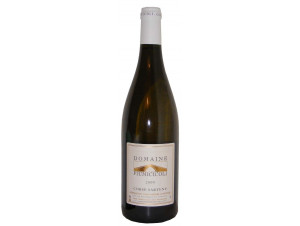






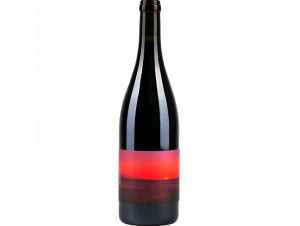
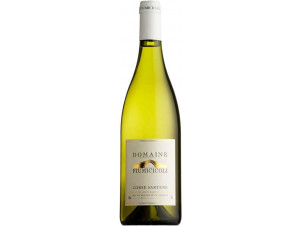



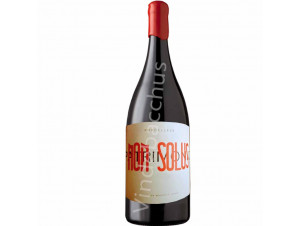
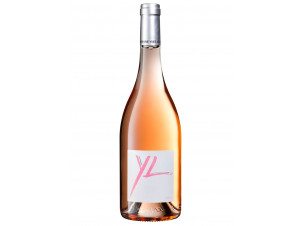




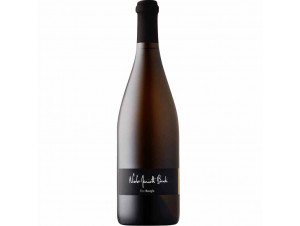












 TWIL - Achat de Vin
TWIL - Achat de Vin


